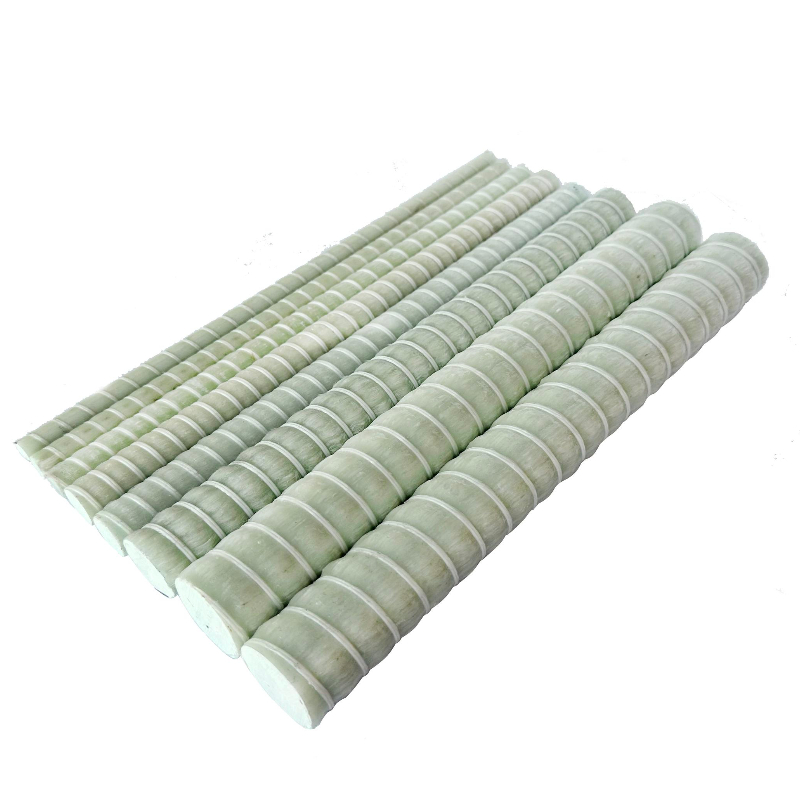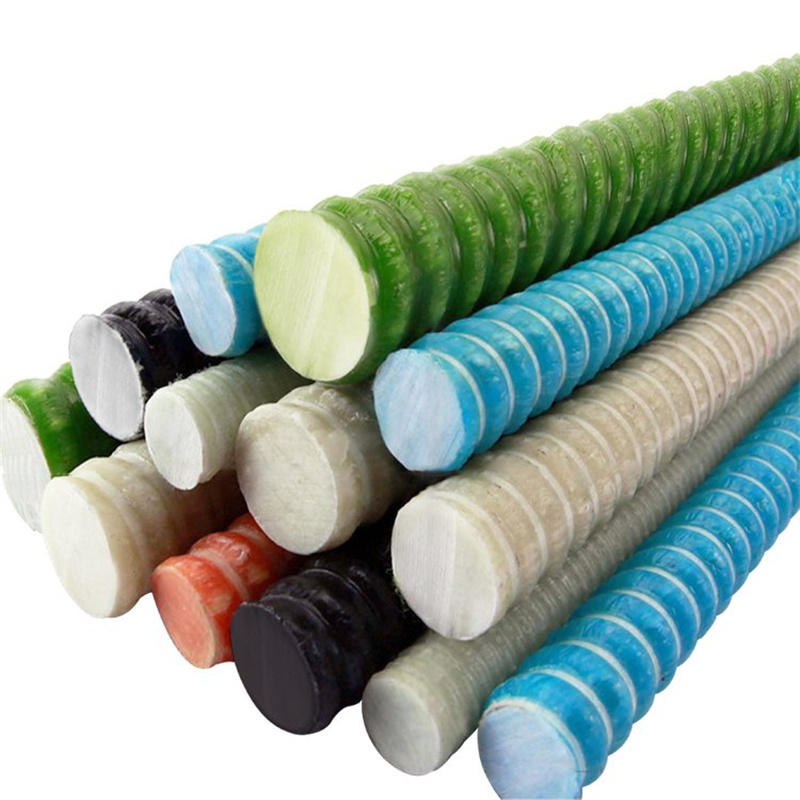Introduction
Fiberglass Reinforcement Profiles have emerged as a revolutionary material in the field of construction and engineering. These profiles combine the strength of traditional materials with the lightweight and corrosion-resistant properties of fiberglass, making them an ideal choice for a variety of applications. Understanding the properties of Fiberglass Reinforcement Profile is crucial for professionals seeking to enhance structural integrity while reducing maintenance costs. This article delves deep into the mechanical, thermal, and chemical properties of these profiles, highlighting their advantages and practical applications in modern industry.
What is Fiberglass Reinforcement Profile?
Fiberglass Reinforcement Profile refers to structural components made from fiberglass-reinforced polymers (FRP). These profiles are manufactured by combining glass fibers with a polymer matrix, typically using processes like pultrusion. The result is a composite material that exhibits exceptional strength-to-weight ratios, durability, and resistance to environmental factors. Unlike traditional materials such as steel or aluminum, fiberglass profiles do not corrode or deteriorate under harsh conditions, making them suitable for long-term applications.
Mechanical Properties
One of the most significant advantages of Fiberglass Reinforcement Profile is its outstanding mechanical properties. The tensile strength of these profiles can range from 300 MPa to over 1000 MPa, depending on the type of glass fibers and resin used. This high tensile strength ensures that the profiles can withstand substantial loads without deformation or failure. Additionally, the modulus of elasticity for fiberglass profiles typically falls between 20 GPa and 50 GPa, providing the necessary stiffness for structural applications.
Moreover, the impact resistance of fiberglass profiles is notable. Due to the energy-absorbing nature of the fiberglass matrix, these profiles can endure sudden impacts without cracking or breaking. This property is particularly beneficial in environments where the structures are subjected to dynamic loads or potential collisions.
Fatigue Resistance
Fiberglass Reinforcement Profiles exhibit excellent fatigue resistance, maintaining their structural integrity under cyclic loading conditions. This makes them ideal for applications such as bridge decks, pedestrian walkways, and components in machinery where repeated stress cycles are common. Studies have shown that fiberglass profiles can endure millions of load cycles without significant degradation in performance.
Lightweight Nature
Despite their strength, fiberglass profiles are remarkably lightweight, often weighing only one-quarter that of steel. This property simplifies transportation, handling, and installation processes, leading to reduced labor costs and faster construction times. The lightweight nature also contributes to the overall efficiency of structures by reducing the load on foundations and supporting elements.
Thermal Properties
Fiberglass Reinforcement Profiles possess advantageous thermal properties that make them suitable for use in a wide range of temperatures. They have a low coefficient of thermal expansion, ensuring dimensional stability under temperature fluctuations. This means that the profiles will not warp, buckle, or expand excessively, which is critical in applications requiring precise tolerances.
The thermal conductivity of fiberglass profiles is relatively low compared to metals, providing inherent insulation properties. This characteristic is beneficial in construction applications where thermal bridging needs to be minimized. By using fiberglass profiles, engineers can enhance the energy efficiency of buildings and reduce heating and cooling costs.
Fire Resistance
While fiberglass itself is not highly flammable, the fire resistance of Fiberglass Reinforcement Profiles depends on the resin matrix used. Fire-retardant resins can be incorporated to enhance the fire resistance, allowing the profiles to meet stringent fire safety standards. In case of a fire, the profiles do not release toxic fumes, which is an essential consideration for safety in occupied spaces.
Chemical Properties
Fiberglass Reinforcement Profiles exhibit excellent chemical resistance, making them ideal for use in corrosive environments. They are unaffected by most acids, alkalis, salts, and industrial chemicals. This property extends the service life of structures in chemical plants, wastewater treatment facilities, and coastal installations where metal components would typically corrode.
The inert nature of fiberglass also means that it does not leach harmful substances into the environment. This makes fiberglass profiles suitable for applications involving potable water or food processing equipment. The material's resistance to biological degradation further contributes to its longevity in various settings.
Advantages Over Traditional Materials
When compared to traditional materials like steel, aluminum, or wood, Fiberglass Reinforcement Profiles offer several compelling advantages. Their corrosion resistance eliminates the need for protective coatings or regular maintenance, resulting in lower lifecycle costs. The material's high strength-to-weight ratio allows for the design of more efficient structures without compromising on safety or performance.
Additionally, fiberglass profiles are non-conductive, providing electrical insulation in applications where conductivity is a concern. This property is particularly beneficial in the construction of utility poles, ladders, and enclosures for electrical equipment. The versatility of fiberglass profiles enables customization in terms of shapes, sizes, and surface finishes to meet specific project requirements.
Environmental Sustainability
Fiberglass Reinforcement Profiles contribute to environmental sustainability by offering a long service life and reducing the need for replacement materials. Their production process can have a lower carbon footprint compared to traditional metals, especially when considering the energy savings during transportation and installation due to their lightweight nature. Using fiberglass profiles aligns with green building initiatives and sustainable construction practices.
Applications in Various Industries
The unique properties of Fiberglass Reinforcement Profiles have led to their adoption across numerous industries. In civil engineering, they are used to construct bridges, boardwalks, and handrails that are exposed to harsh environmental conditions. The chemical resistance and durability of the profiles make them ideal for infrastructure in coastal areas and industrial settings.
In the electrical industry, fiberglass profiles serve as insulating components due to their non-conductive nature. They are employed in the manufacturing of transformer platforms, cable trays, and switchgear components. The transportation industry utilizes fiberglass profiles in vehicle frames, gratings, and ladders, benefiting from the reduced weight and corrosion resistance.
Case Study: Fiberglass Profiles in Bridge Construction
An exemplary application of Fiberglass Reinforcement Profiles is seen in the construction of pedestrian bridges in corrosive environments. A study conducted by the University of Maine demonstrated that bridges constructed with fiberglass profiles exhibited superior durability and required minimal maintenance over a 20-year period. The lightweight nature allowed for rapid installation with minimal disruption to the environment.
Use in Architectural Designs
Architects are increasingly incorporating fiberglass profiles into their designs due to the material's versatility. Custom shapes and finishes can be achieved, enabling innovative structural and aesthetic solutions. The profiles can be molded into complex geometries, allowing for creative freedom while maintaining structural integrity.
Challenges and Considerations
While Fiberglass Reinforcement Profiles offer numerous advantages, certain challenges must be considered. The initial material cost can be higher than traditional materials, although this is often offset by reduced maintenance and longer service life. Engineers must also account for the anisotropic nature of the material, ensuring that designs align the profiles in directions that maximize strength.
Processing and fabrication require specific techniques and tools due to the hardness and abrasiveness of fiberglass. Proper handling procedures must be implemented to protect workers from fiberglass dust and splinters. Additionally, end-of-life disposal and recycling options for fiberglass materials are areas requiring further development to enhance environmental sustainability.
Advancements in Fiberglass Technology
Ongoing research and development are leading to advancements in fiberglass technology. Innovations in resin systems are improving the thermal and fire-resistant properties of Fiberglass Reinforcement Profiles. Additionally, the development of hybrid composites incorporating carbon fibers or nanomaterials is enhancing mechanical properties and expanding the range of applications.
Manufacturers are also improving the processing techniques to produce more consistent and higher-quality profiles. Automation and better control systems in pultrusion processes are reducing defects and increasing production efficiency. These advancements contribute to the wider adoption of fiberglass profiles in various sectors.
Expert Insights
Industry experts predict significant growth in the use of Fiberglass Reinforcement Profiles. According to a report by MarketsandMarkets™, the global FRP market is expected to reach USD 282 billion by 2026, driven by increased demand in construction, automotive, and renewable energy sectors. Experts emphasize the importance of education and awareness among engineers and architects to fully realize the benefits of fiberglass profiles.
Conclusion
Fiberglass Reinforcement Profiles represent a significant advancement in material technology, offering a combination of strength, durability, and versatility unmatched by traditional materials. Understanding their properties is essential for professionals seeking to implement innovative and cost-effective solutions in construction and engineering projects. With ongoing advancements and increasing awareness, the utilization of Fiberglass Reinforcement Profile is poised to expand, contributing to more sustainable and efficient infrastructures. Embracing these materials can lead to long-term benefits, including reduced maintenance costs, improved performance, and alignment with environmental sustainability goals.



























